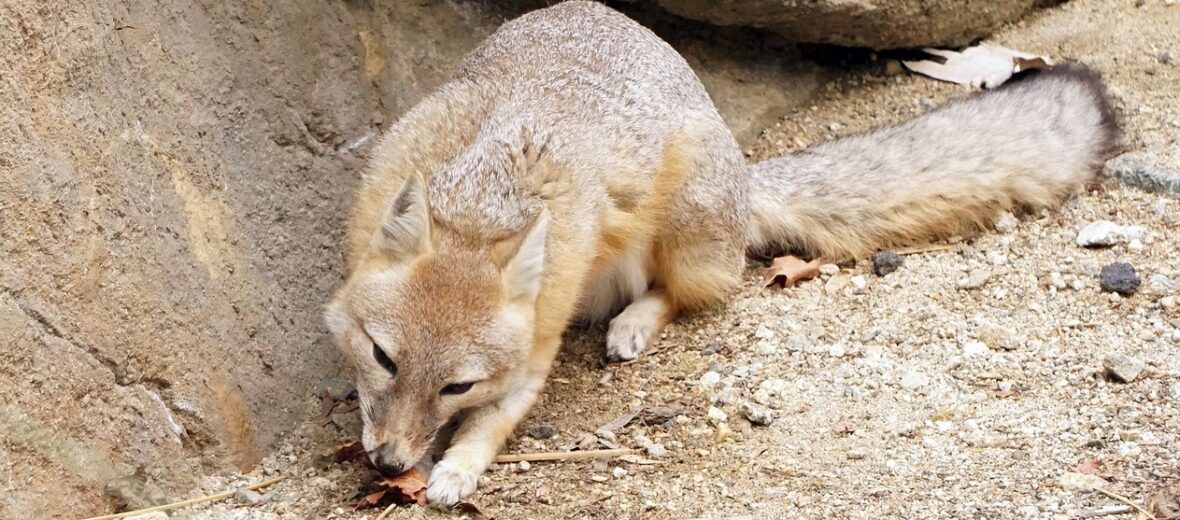
The kit fox is widespread and found as far north as the arid regions of Oregon, east to southwestern Colorado, south through Utah, Nevada, southeastern California, New Mexico, Arizona, and into western Texas. In Mexico they are found primarily in the states of Chihuahua, Coahuila, and Nuevo Leon, and throughout Baja California. Kit foxes prefer arid regions, like desert scrub, chaparral, and grasslands. These foxes are listed as Least Concern by the IUCN.
First the Stats…
Scientific name: Vulpes macrotis
Weight: Up to 6.5 lbs.
Length: Up to 20.5 inches, plus a 12.5 inch tail
Height: Up to 12 inches
Lifespan: Up to 12 years
Now on to the Facts!
1.) They feed mostly on white-footed mice, California ground squirrels, kangaroo rats, San Joaquin antelope squirrels, pocket mice, black-tailed hares, desert cottontails, chukar, ground-nesting birds, insects, and they also eat berries.
2.) These cute critters are preyed on by bobcats, coyotes, red foxes, feral dogs, birds of prey, and humans.
3.) Most of their water comes from the food they eat, so they don’t drink much standing water.
4.) Kit foxes are the smallest species of fox found in North America.
5.) The kit fox is primarily nocturnal (active at night) but are occasionally crepuscular (active at dawn and dusk).
But wait, there’s more on the kit fox!
6.) Kit foxes have really large ears that allow for improved thermoregulation (transfer of heat) and excellent hearing.
7.) Sometimes these foxes will bark at perceived threats or they will use a “hacking growl” in specific situations.
Did you know…?
Kit foxes can run up to 25 mph!
8.) A few other names for these critters are: desert fox, zorra del desierto (Spanish), zorra norteña (Spanish), and wüstenfuchs (German).
9.) These typically monogamous (mate for life) foxes start mating in October and November.
10.) Females give birth to 4 – 7 kits each year.
Now a Short Kit Fox Video!
Also, check out the Critter Science YouTube channel. Videos added frequently!
Want to suggest a critter for me to write about? Let me know here.



